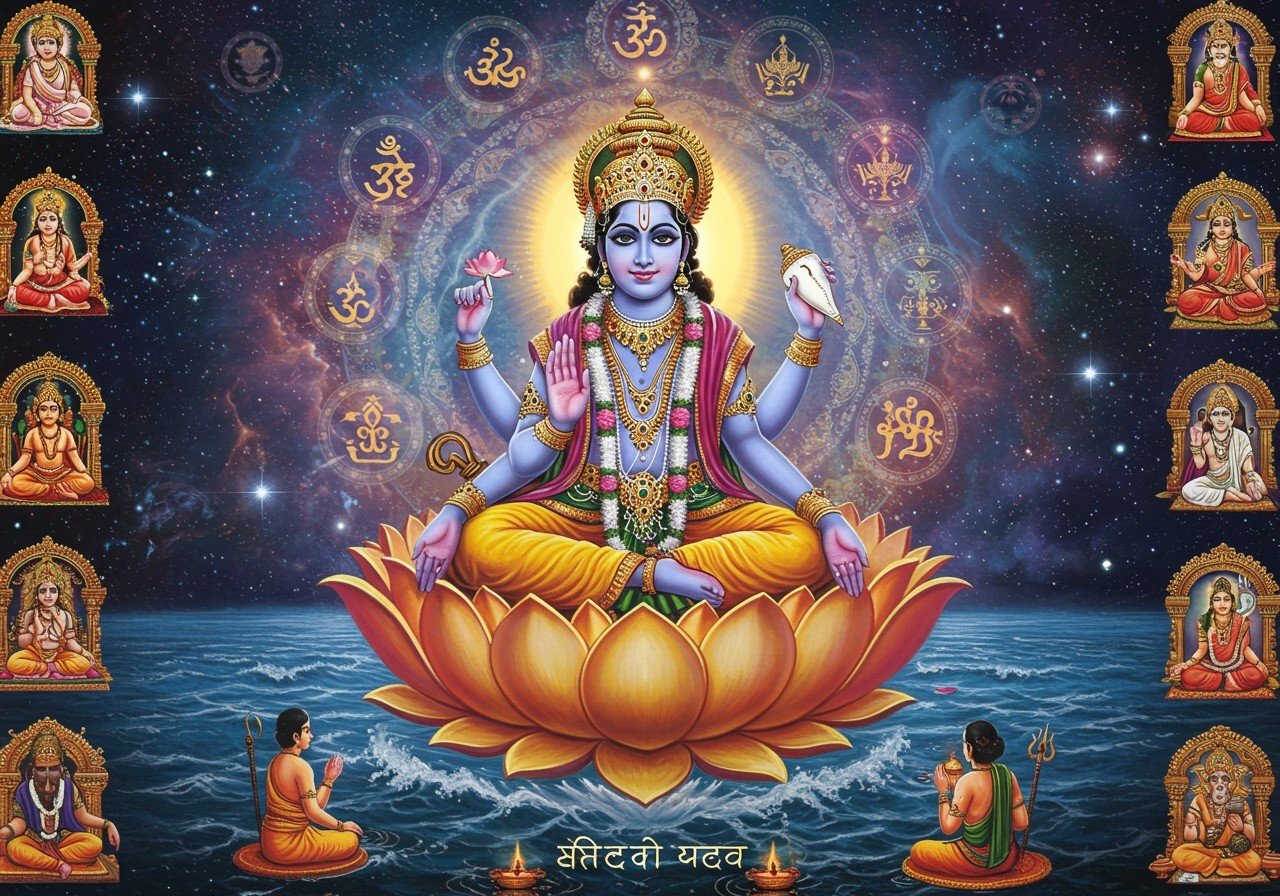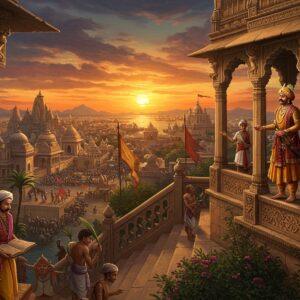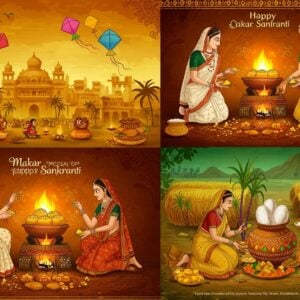
Pancharatra Philosophy holds a special place in the hearts of those who cherish tradition and spirituality. With roots in ancient Indian customs, this unique branch of Vaishnavism centers around the worship of Lord Vishnu. It offers insights into both historical and modern contexts, making it relevant for culturally rooted Indians in 2025.
Historical Context and Origins of Pancharatra
Pancharatra’s origins trace back to ancient Indian scriptures, emerging as a religious and philosophical system around the 3rd century BCE. This tradition, deeply embedded within the Vaishnavism school of philosophy, emphasizes the worship of Narayana and the various avatars and forms of Vishnu as central deities. Key textual sources of Pancharatra Agama include the Naradiya, Sattvata, and Paushkara Samhitas, and these texts have profoundly influenced temple rituals and iconography within Vaishnavism.
Philosophy of Pancharatra
Pancharatra’s philosophy revolves around the worship of Narayana, highlighting devotion and surrender. The term “Pancharatra” literally translates to “five nights,” holding symbolic interpretations connected to Lord Vishnu’s five forms (Para, Vyuha, Vibhava, Antaryami, and Archa) and five types of knowledge discussed in Pancharatra texts (Bhagavath swarupa, jiva swarupa, the means to reach Him, the hurdles in the path, and Purushartham). These concepts are deeply intertwined with the core principles of Bhakti, encouraging complete surrender, or Prapatti, to Vishnu.
Pancharatra in Mahabharata
The Mahabharata, a cornerstone of Indian epic literature, provides glimpses into Pancharatra practices through characters like Arjuna and Narada. These characters’ engagement with Pancharatra rituals exemplifies the tradition’s principles of devotion and righteousness, offering valuable insights into the integration of Pancharatra philosophy within the epic’s narrative. The Bhagavad Gita, with its profound dialogue between Krishna and Arjuna, further echoes these teachings, emphasizing devotion and ethical conduct.
Pancharatra Vaishnavism
Pancharatra evolved as a significant sect within Vaishnavism, shaping temple worship, iconography, and theological discourse. Distinguished by its focus on ritualistic worship, temple construction, and the use of sacred images (murtis), Pancharatra Vaishnavism provides a structured framework for devotion and spiritual practice. Prominent temples like Srirangam and the Varadaraja temple in Kanchi adhere to the tenets of Pancharatra Agama, reflecting the tradition’s enduring influence.
Contemporary Relevance and Significance
In contemporary society, Pancharatra continues to resonate with culturally rooted Indians, offering a path to connect with tradition and spirituality. Its rituals and philosophies adapt to modern contexts, providing guidance for devotees in their daily lives and temple worship. The philosophy’s accessibility and relevance are enhanced by online platforms like poojn.in, which provide access to authentic ritual items, catering to the needs of modern practitioners seeking to maintain their cultural identity.
How Poojn.in Supports Your Pancharatra Practice
Poojn.in, India’s leading online store for cultural goods and services, offers a wide selection of products to support your Pancharatra practice. You can find everything you need, from puja items to religious texts and ritual kits, all in one convenient place.
Explore our collection of authentic puja items:
- Pure copper and brass vessels: Discover our range of beautifully crafted vessels ideal for daily worship and offerings.
- Traditional lamps (deepams): Illuminate your altar with traditional lamps, creating a sacred atmosphere for your prayers.
We also provide essential worship materials:
- High-quality kumkum and chandanam: Enhance your puja rituals with premium kumkum and chandanam, symbolizing purity and devotion.
- Pure ghee and camphor: Offer pure ghee and camphor to the deities, creating a sacred ambiance and invoking blessings.
Deepen your understanding with our selection of religious texts:
- Pancharatra Agama texts: Immerse yourself in the core scriptures of Pancharatra, delving into the rich philosophical and ritualistic traditions.
Explore our collection. - Books on Vaishnava traditions: Expand your knowledge of Vaishnavism with insightful books that provide historical, philosophical, and practical guidance. Learn more.
Simplify your puja preparations with our ritual kits:
- Pre-assembled puja sets: Find everything you need for various pujas, conveniently packaged and ready to use.
- Festival-specific items: Celebrate festivals with authentic items and ritual kits, ensuring traditional observance and spiritual significance. Find what you need for Navagraha Puja.
Conclusion
Pancharatra offers a path to spiritual fulfillment by integrating devotion, knowledge, and action. Its rich traditions provide a sense of connection and purpose. As you embrace Pancharatra, you become part of a legacy that values devotion and righteousness, enriched by ancient wisdom. Whether through temple rituals or personal practices, Pancharatra allows you to experience the divine with authenticity, respecting tradition while embracing the present.
FAQs on Pancharatra Philosophy and Significance
What is the core of Pancharatra philosophy?
Pancharatra, a branch of Vaishnavism, centers around worshipping Lord Vishnu and his avatars. It emphasizes rituals, temple practices, and devotion for spiritual development and liberation.
How is Pancharatra linked to the Mahabharata?
The Mahabharata references Pancharatra as a system of worship and rituals dedicated to Lord Vishnu. Characters like Krishna exemplify Pancharatra’s devotion and righteousness.
What is Pancharatra’s importance within Vaishnavism?
Pancharatra provides detailed instructions for temple construction, idol worship, and rituals. It highlights devotion (bhakti) as crucial for spiritual enlightenment and closeness with Vishnu.
How does Pancharatra shape temple rituals?
Pancharatra outlines specific rituals for temple worship. These cover daily practices, festival celebrations, and idol consecration, ensuring sanctity and traditional adherence.
Is Pancharatra solely focused on rituals?
While Pancharatra details rituals, it also emphasizes philosophical teachings on ethical living, devotion, and understanding God, promoting a balanced spiritual life.
What differentiates Pancharatra Vaishnavism from other traditions?
Pancharatra strongly focuses on temple rituals and idol worship, while other Vaishnava traditions may emphasize different paths like knowledge (jnana) or meditation. It offers a structured approach to devotion through rituals.
Which texts are key to Pancharatra philosophy?
The Agamas, scriptures detailing rituals, temple construction, and worship methods, are crucial in Pancharatra. They guide followers in maintaining the purity and sanctity of practices.
How can one integrate Pancharatra into daily life?
One can practice Pancharatra through regular worship, mantra chanting, and following its ethical principles. Devotees also engage in community service and temple activities for a deeper spiritual connection.


